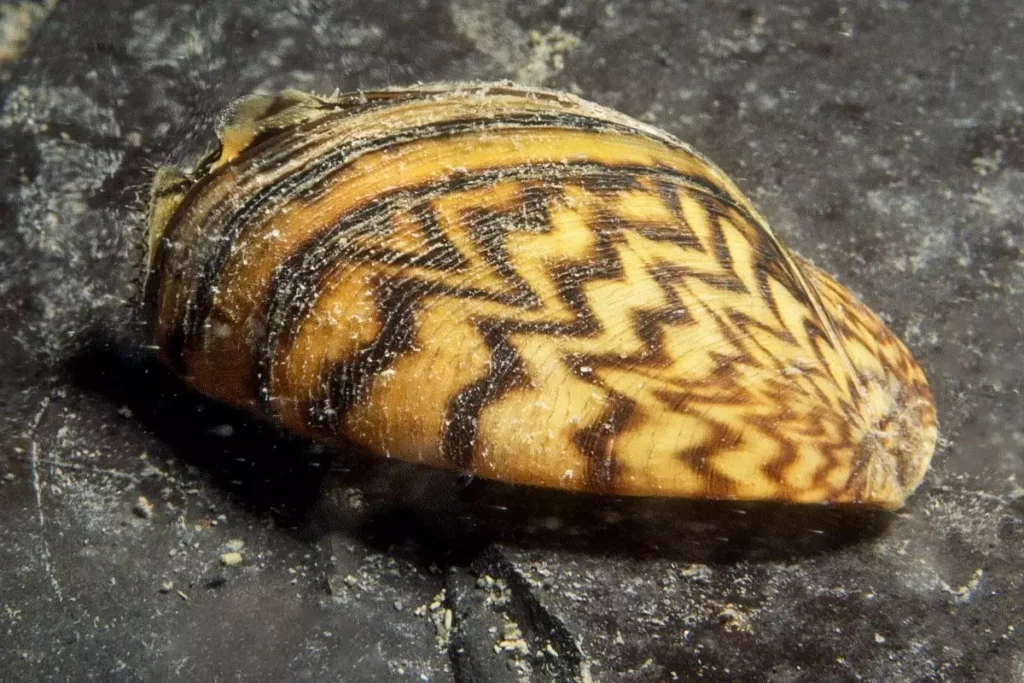Invasive Zebra Mussel (Dreissena polymorpha) has been found for the first time in the Colorado River.
About Zebra Mussel (Dreissena polymorpha):
- Zebra Mussel (Dreissena polymorpha) is a small freshwater mussel.
Habitat:
- This mollusk is found in slow rivers, canals, lakes, water pipes, and other underwater environments attached to both natural and manmade substrates including rocks, wood, native mussels, and man-made structures like docks and watercraft.
Characteristics:
- Size and Appearance: They are fingernail-sized, featuring a distinct, flat-bottomed ‘D’ shape shell with black, zigzag stripes on a cream background.
- Lifespan and Reproduction: They live between two to five years, begin reproducing at two years of age, and females can release up to one million eggs each breeding season.
- Feeding: As filter feeders, they siphon particles of plankton and algae from the water and can significantly disrupt local food webs by depleting phytoplankton.
Distribution:
- Originally native to the Caspian and Black Seas, they were probably introduced to the Great Lakes in the 1980s via ballast water from ships and have since spread through much of eastern Canada and the United States.
Biofouling and Impacts:
- Physical Attachment: They use root-like protein byssal threads to firmly attach to hard surfaces.
- Environmental Impact: Their ability to attach to and suffocate native mussels, combined with their rapid reproduction, poses a severe threat to aquatic ecosystems and native species, many of which are at risk.
- Economic Impact: They cause significant damage to infrastructure by clogging water-intake valves, pipes, and other structures, leading to costly maintenance and repair.
- Identification: In their larval stage, known as “veliger,” they are microscopic, growing up to two inches long at most when mature.
Ref: Source
| UPSC IAS Preparation Resources | |
| Current Affairs Analysis | Topperspedia |
| GS Shots | Simply Explained |
| Daily Flash Cards | Daily Quiz |
Frequently Asked Questions (FAQs)
Where can Zebra Mussels be found in their natural habitat?
Zebra Mussels are commonly found in slow rivers, canals, lakes, water pipes, and other underwater environments where they can attach to various substrates.
What is the size and appearance of Zebra Mussels?
Zebra Mussels are fingernail-sized with a distinct ‘D’ shape shell featuring black, zigzag stripes on a cream background.
How long do Zebra Mussels live and when do they begin reproducing?
Zebra Mussels typically live between two to five years, begin reproducing at two years of age, and females can release up to one million eggs each breeding season.
What do Zebra Mussels feed on and how do they obtain their food?
Zebra Mussels are filter feeders that siphon particles of plankton and algae from the water, which can disrupt local food webs by depleting phytoplankton.
Where were Zebra Mussels originally native to and how were they likely introduced to the Great Lakes?
Zebra Mussels were originally native to the Caspian and Black Seas and were probably introduced to the Great Lakes in the 1980s via ballast water from ships.



